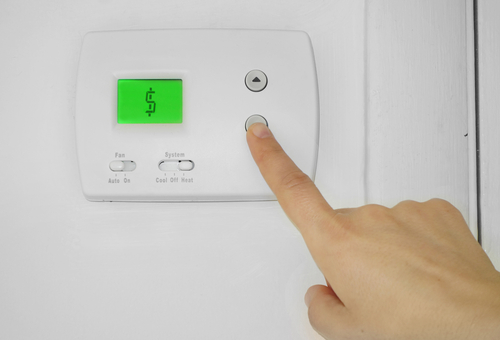The weather outside might be frightful, but your heating bill doesn’t have to be. This holiday season, colder temperatures will impact much of the United States, turning it into a winter wonderland. But Frosty the Snowman standing next to your building doesn’t need or want your warm air.

Some solutions are more costly than others, so facilities professionals should consult with their leadership teams to determine which ideas are best for their properties, as well as consider the following 10 tips to save money on their heating bills—no matter what type of facility they manage.
Tip #1: Check seals around windows and doors
Ensure your facility isn’t leaking heat by visually inspecting for leaks around windows and doors. Also, consider conducting a building pressurization test and a thermographic inspection.
Be sure to check out “Improving Building Maintenance with Thermal Camera Inspections” on Facilities Management Advisor.
Tip #2: Install door closers and close windows
Consider installing automatic door closers on entrance and exit doors so they close promptly after being used. Also, be sure that all windows that can open are closed tightly.
Tip #3: Replace doors and windows
For facilities with large windows and glass doors, think about using double-glaze glass, which will keep your facility warmer longer. For areas with super-cold temperatures (like Alaska and North Dakota), consider installing triple-paned windows.
Tip #4: Install skylights
Minimize heating needs by installing skylights, and consider factors such as energy performance ratings, glazing, and shapes. For energy-efficient skylights, find criteria released by ENERGY STAR, or look up ratings from the National Fenestration Rating Council (NFRC).
Also check out “Back to Basics: How Businesses Can Participate in the ENERGY STAR Program” on Facilities Management Advisor.
Tip #5: Make sure there is proper insulation
Check walls, ceilings, and floors for adequate amounts of insulation, which can degrade and settle over time, and think about adding foam insulation to walls. Facilities professionals not well versed in insulation, however, should consult an insulation expert.
Tip #6: Optimize the roof for energy efficiency
Check the roof for issues such as improper sealing, inadequate insulation, and unprotected penetrations, and consider using thermal imaging to determine temperature differences.
Tip #7: Check ductwork
Ensure all ductwork sections are in satisfactory condition and fit snugly together. Check duct joints for leaks, and insulate ductwork with blanket insulation or rigid fiberboard.
Tip #8: Perform a commercial or an industrial energy audit
Find hidden ways heat could be escaping by having a professional energy analyst look at the facility’s operational characteristics and identify and analyze ways to save energy.
Tip #9: Check the temperature
The Occupational Safety and Health Administration (OSHA) recommends that offices be kept between 68°F and 76°F, with a humidity control between 20% and 60%. While it might be tempting to set the temperature to 68°F to save money, a Cornell University study found that productivity increased when it was 77°F.
Tip #10: Install smart thermostats
Install smart thermostats to control the temperature by zone, which is helpful if certain facility sections tend to be warmer than others. While smart thermostats can automatically lower temperatures during unoccupied times in the winter, the Department of Energy and Environment recommends a minimum temperature of 60°F.
Next time it gets cold outside, ensure your facility is nice and toasty by following these tips not only so your occupants can take off their winter coats, but also so you can don your red superhero cape by saving your company money.
